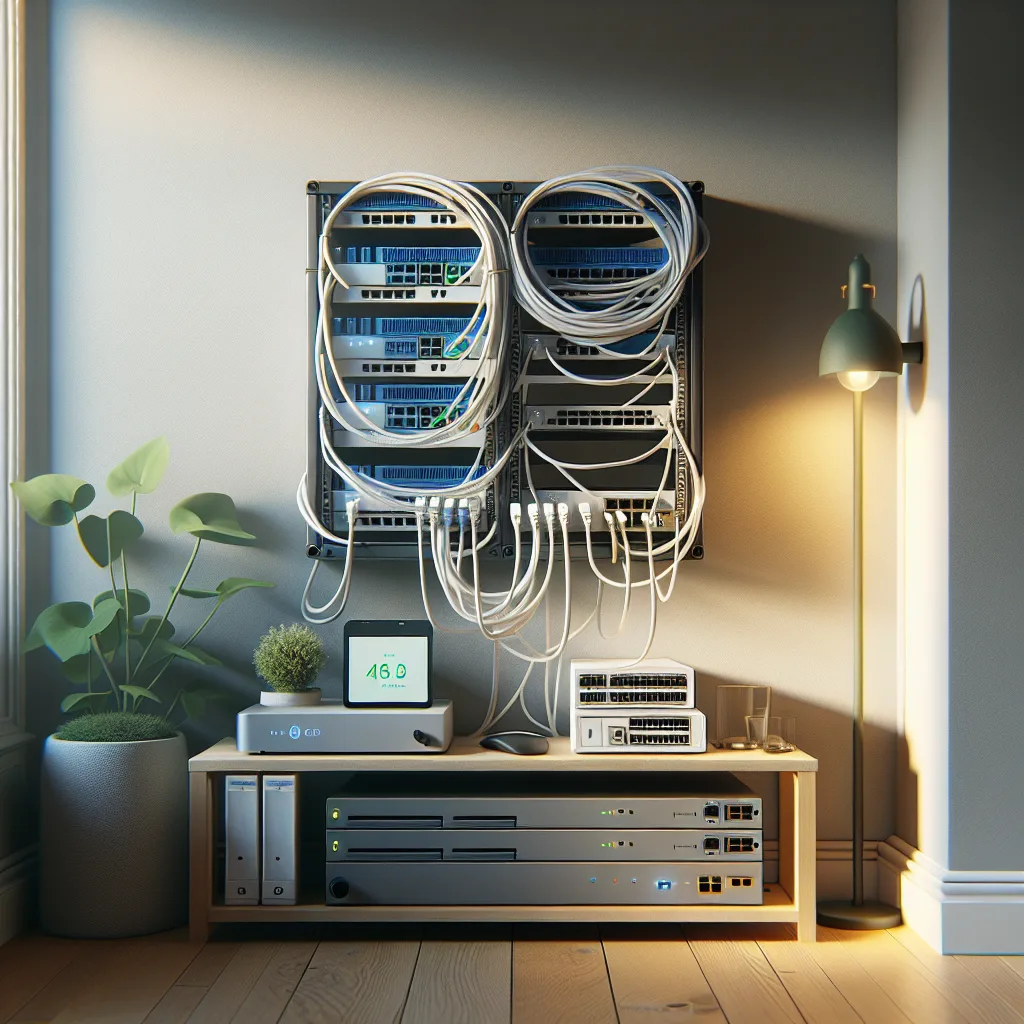Tired of cable clutter? Follow my journey of building a mini home server rack to organize my tech, learn new skills, and create a clean, satisfying setup.
It Started with a Mess
Let’s be honest. The space behind my desk was a disaster. A chaotic tangle of black and white cables for the modem, the router, a smart home hub, and a few other little boxes with their own blinking lights. It worked, sure, but it was an eyesore. And every time I needed to reset something, it felt like performing surgery in the dark.
I’d seen pictures of “homelabs” online—these beautiful, clean setups with neatly managed wires and professional-looking gear. I always thought they were just for serious IT pros or people running massive operations from their basement.
But then I had an idea. What if I could build a mini version of that? Something small, just for my own stuff. A weekend project to finally bring some order to my tech chaos. So, I did. And it turned out to be one of the most satisfying projects I’ve tackled in a long time.
Why Even Bother with a Server Rack at Home?
I get it. It sounds like overkill. A “server rack” feels like something that belongs in an office building, not a spare room. But the benefits are surprisingly practical, even for a small setup like mine.
- Pure Organization: This was my main reason. All those little boxes and their power bricks are now in one single, tidy cabinet. The cable mess is gone. Everything has its place, and it’s all neatly plugged into a single power strip inside the rack. It just looks better.
- A Central Hub for Everything: It’s not just about looks. Having a central, always-on computer in the rack (in my case, a tiny little PC) opens up a lot of possibilities. I use it to run a Plex media server, so I can watch my movies on any device in the house. I also run a network-wide ad blocker, which speeds up browsing on every single device I own.
-
It’s a Great Way to Learn: If you’re at all curious about how networks work, this is the best sandbox you can build. You learn about networking, cables, and how to set up simple server software in a hands-on way. It’s a practical skill, and it’s genuinely fun to see it all come together.
My “Work in Progress” Mini Setup
The best part about this project is that it’s never really “done.” It’s a work in progress, and that’s what makes it fun. You can start small and add to it over time. Here’s a peek at what’s in my rack so far.
1. The Rack Itself: I went with a small, 6U wall-mounted rack. “U” is just a unit of measurement for height in the server world. 6U is tiny—just big enough for the essentials, which is perfect for a home. It keeps everything off the floor and tucked away.
2. A Network Switch: This is the heart of the network. It’s a simple device with a bunch of Ethernet ports. The internet comes in from the modem, plugs into the switch, and then the switch sends it out to all the other devices.
3. A Patch Panel: This might be my favorite part, just because of how clean it makes everything look. Instead of plugging devices directly into the switch, you run the cables to this panel. Then you use short, clean-looking patch cables to connect the panel to the switch. It’s an extra step, but it’s the secret to that pro-level organization.
4. The “Server”: You don’t need a huge, loud machine. I’m using a simple, low-power mini PC. It’s quiet, energy-efficient, and more than powerful enough to handle a media server and a few other small tasks. People use all sorts of things, from Raspberry Pis to old laptops.
5. Power Management: To avoid a mess of power adapters, I got a basic Power Distribution Unit (PDU). It’s essentially a fancy power strip that’s designed to be mounted in the rack. One plug in the wall, eight outlets in the cabinet. Simple and clean.
It’s Your Turn
Building this little rack was surprisingly straightforward. It wasn’t about spending a ton of money or having deep technical knowledge. It was about taking it one step at a time. I started with just the rack and the modem and router I already owned. Then I added the switch. Then the patch panel.
Is it a little nerdy? Absolutely. Did I spend a bit of time watching videos on how to properly punch down an ethernet cable? You bet.
But now, when I look at that neat little cabinet on the wall, with its quietly blinking lights and perfectly ordered cables, I feel a huge sense of accomplishment. The chaos is gone, replaced by satisfying, functional order. If you’ve got a little tech clutter of your own, maybe a mini server rack is the weekend project you’ve been looking for.
